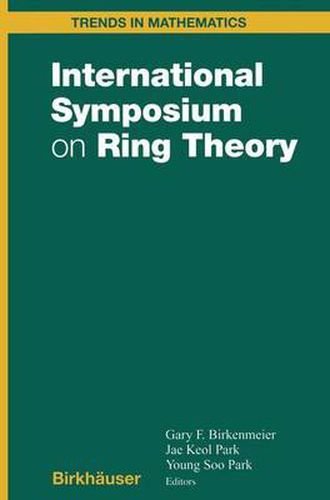Readings Newsletter
Become a Readings Member to make your shopping experience even easier.
Sign in or sign up for free!
You’re not far away from qualifying for FREE standard shipping within Australia
You’ve qualified for FREE standard shipping within Australia
The cart is loading…






This title is printed to order. This book may have been self-published. If so, we cannot guarantee the quality of the content. In the main most books will have gone through the editing process however some may not. We therefore suggest that you be aware of this before ordering this book. If in doubt check either the author or publisher’s details as we are unable to accept any returns unless they are faulty. Please contact us if you have any questions.
This volume is the Proceedings of the Third Korea-China-Japan Inter national Symposium on Ring Theory held jointly with the Second Korea Japan Joint Ring Theory Seminar which took place at the historical resort area of Korea, Kyongju, June 28-July 3, 1999. It also includes articles by some invited mathematicians who were unable to attend the conference. Over 90 mathematicians from 12 countries attended this conference. The conference is held every 4 years on a rotating basis. The first con ference was held in 1991 at Guilin, China. In 1995 the second conference took place in Okayama, Japan. At the second conference it was decided to include Korea, who hosted this conference of 1999. During the past century Ring Theory has diversified into many subar eas. This is reflected in these articles from over 25 well-known mathemati cians covering a broad range of topics, including: Classical Ring Theory, Module Theory, Representation Theory, and the theory of Hopf Algebras. Among these peer reviewed papers are invited survey articles as well as research articles. The survey articles provide an overview of various areas for researchers looking for a new or related field to investigate, while the research articles give the flavor of current research. We feel that the variety of related topics will stimulate interaction between researchers. Moreover the Open Problems section provides guidance for future research. This book should prove attractive to a wide audience of algebraists. Gary F. Birkenmeier, Lafayette, U. S. A.
$9.00 standard shipping within Australia
FREE standard shipping within Australia for orders over $100.00
Express & International shipping calculated at checkout
This title is printed to order. This book may have been self-published. If so, we cannot guarantee the quality of the content. In the main most books will have gone through the editing process however some may not. We therefore suggest that you be aware of this before ordering this book. If in doubt check either the author or publisher’s details as we are unable to accept any returns unless they are faulty. Please contact us if you have any questions.
This volume is the Proceedings of the Third Korea-China-Japan Inter national Symposium on Ring Theory held jointly with the Second Korea Japan Joint Ring Theory Seminar which took place at the historical resort area of Korea, Kyongju, June 28-July 3, 1999. It also includes articles by some invited mathematicians who were unable to attend the conference. Over 90 mathematicians from 12 countries attended this conference. The conference is held every 4 years on a rotating basis. The first con ference was held in 1991 at Guilin, China. In 1995 the second conference took place in Okayama, Japan. At the second conference it was decided to include Korea, who hosted this conference of 1999. During the past century Ring Theory has diversified into many subar eas. This is reflected in these articles from over 25 well-known mathemati cians covering a broad range of topics, including: Classical Ring Theory, Module Theory, Representation Theory, and the theory of Hopf Algebras. Among these peer reviewed papers are invited survey articles as well as research articles. The survey articles provide an overview of various areas for researchers looking for a new or related field to investigate, while the research articles give the flavor of current research. We feel that the variety of related topics will stimulate interaction between researchers. Moreover the Open Problems section provides guidance for future research. This book should prove attractive to a wide audience of algebraists. Gary F. Birkenmeier, Lafayette, U. S. A.